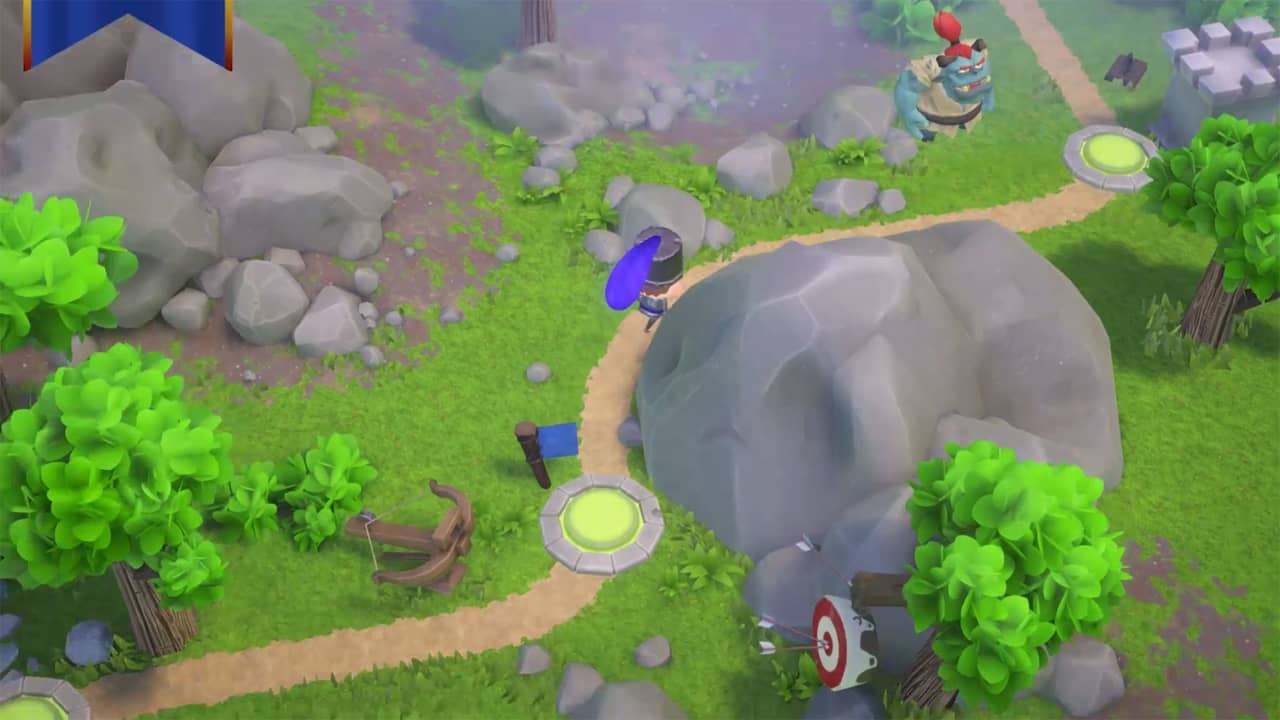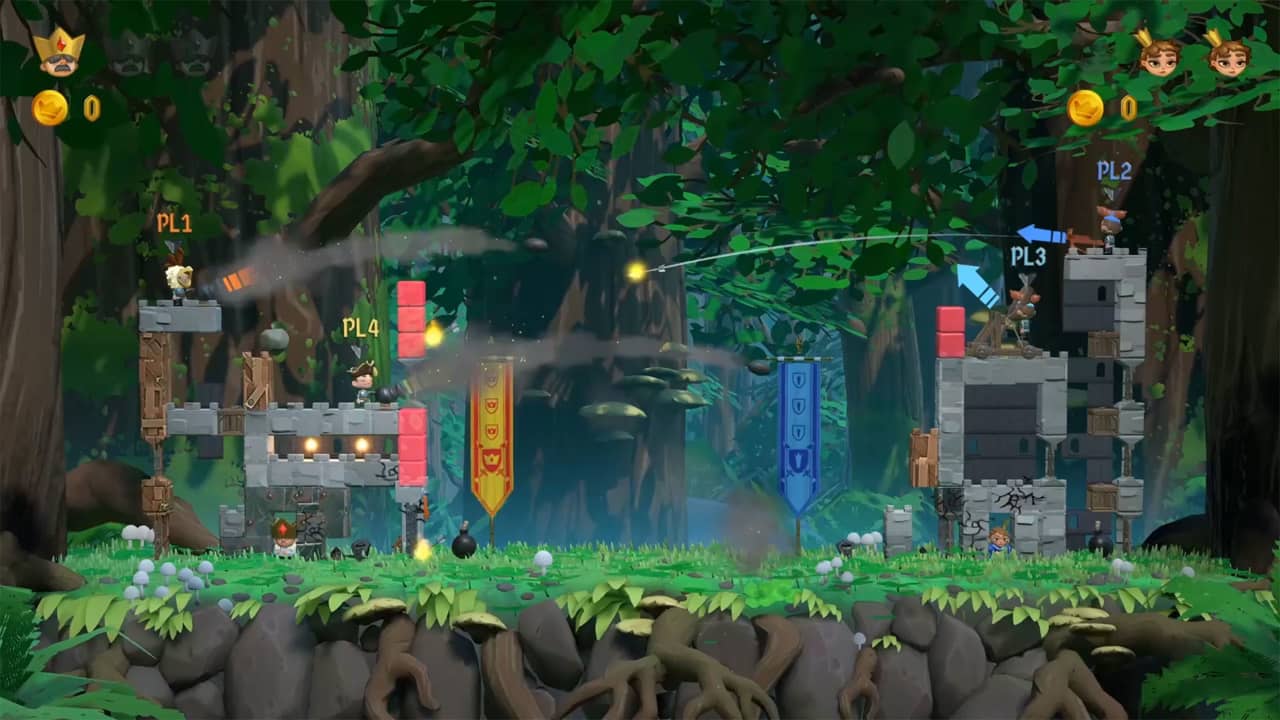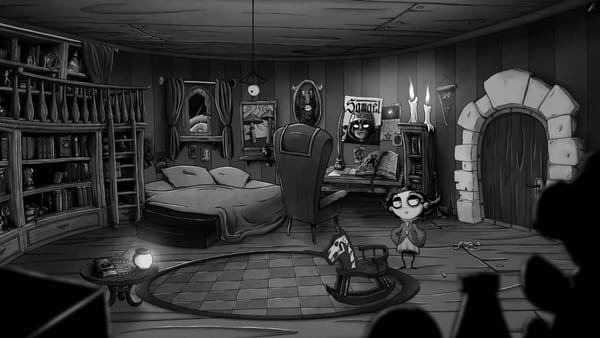The mixed opinions of KnightOut on Steam make sense. It has tons of potential but is let down by gameplay mechanics. To go against the grain, my beef with the game wasn’t the lack of online play, which a few people were disappointed with, but something else.
Like a handful of the titles I’ve received in my inbox of late, KnightOut came directly from the developer, and like Bass Monkey, a title I wasn’t aware of. However, the lure of tower defence was enough for me to give it a go and see how it played out.

The ‘party brawler’ moniker might feel mildly misleading as it’s more to do with tower defence and strategy than a button masher. It’s not turn-based, though, so once you place your defences, you can interact with them in real-time.
I won’t bang on about it as I’m not someone who likes online play, so the lack of this feature didn’t bother me. However, since its crowdfunding in 2017 and subsequent Early Access on Steam, the negative comments on the game have complained about the lack of online play – only offering local play for up to 1-4 players. In 2nd Studio’s defence, it doesn’t claim to be online and does state ‘local party brawler’. If that’s a deciding feature, you could give it a miss, but just relive the days of being sociable and invite some friends over instead.
KnightOut is simple enough. The King has tasked you with defending their kingdom against invaders, and you have the free will to build how you see fit, pending that it’s within the King’s budget. The build area resembles a Tetris layout, and you drag and drop where you want walls and defences to go. If anything, it reminded me of the shipbuilding in Spiritfarer. Once you’ve built your defences, the waves begin, and you have to fight off the threat.

This is the active element of the game as you control your warrior within the castle space. Jump up onto the fortifications, take control of a cannon or ballista, and then shoot the enemies between the whites of their eyes. Aiming is easy enough, but it takes a little getting used to when it comes to determining the power of your attack. I was expecting Worms, but it was a little more inconsistent.
When the enemies go down, they’ll spawn a pile of coins that can be used for the next wave. You manually aim your character to collect these, and this was my beef with KnightOut. Yeah, it’s nice to run around and do as you please, but you’re vulnerable to attacks. Ground units are fine, but my hatred for flying assailants worsened here as they’d knock me off my perch, and I’d have to ascend the castle once more while it was under attack.
Your castle defences aren’t set in stone, despite being made of the material, but they quickly come down, so don’t get attached to your architectural masterpiece. Some walls only take a couple of hits, your character will die with one hit but will respawn, but the King is paramount as should the evil forces reach him, you’re defeated. But forget about the outside enemies: you’re your worst enemy as it’s so easy to blow up your defences in error, taking out your guns simultaneously! Miscalculating the trajectory can ruin you as you’ll have no money to build new structures and rely on jumping on the heads of orcs and what-not.
To be honest, the latter was my strategy for many of the stages in KnightOut. In the opening Story mode, you can simply jump on enemies’ heads and squirrel away the coins. This tactic also proved helpful as the coins disappear so quickly, you can’t round them up at the end. KnightOut has potential, but the mechanics were too frustrating with the sudden deaths and easy to make mistakes by blowing up your base. I guess local play would be fun with others, but I couldn’t convince my kids to play this with me, I’m afraid.










